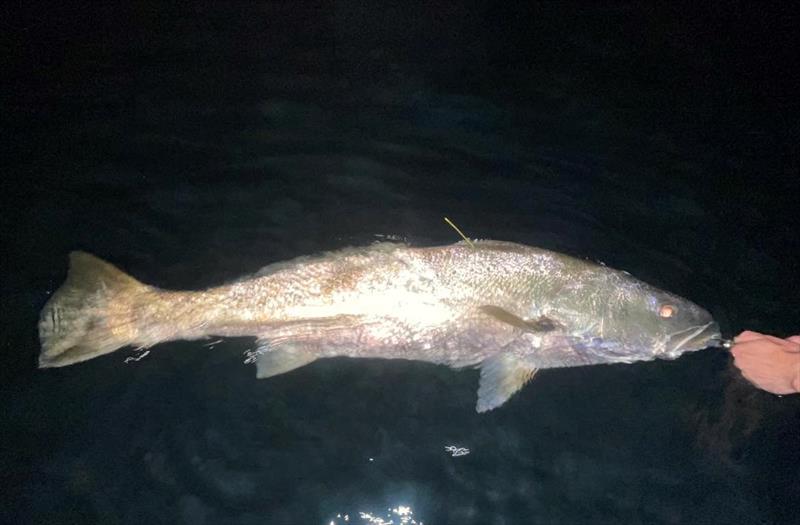
Mulloway tagging insights
by NSW DPIRD 18 Nov 2024 00:54 UTC

Mulloway tagging insights © NSW DPIRD
Did you know that, since 2014, over 6,050 Mulloway have been tagged by recreational anglers in NSW? During that same period, there have also been 735 recaptures of Mulloway reported to the program.
Recapture information of tagged fish gives our Fisheries researchers valuable information about the movement, growth, and survivability of key species. The overall recapture rate of Mulloway sits at 12.1%, which is considered high for a traditional mark/recapture program. Recapture rates, however, can be impacted by non-reporting of recaptures, tag shedding, fishing pressure, and fish distribution.
The largest growth seen in a recaptured Mulloway was 52cm. The fish was originally tagged at 78cm and was then recaptured at 130cm after 1459 days (nearly 4 years) at liberty. The fish was originally released and then recaptured in the Hawkesbury River. Growth data from recaptures shows that there is high variability in growth rates between individual fish. Growth rates can be impacted by many different factors including (but not limited to): the sex of the fish, food availability, genetics, and other environmental conditions like water temperature.
Stay tuned for more species insights from the Game Fish Tagging Program.
Each reported recapture contributes to our understanding of fish species. If you are lucky enough to recapture a tagged fish, please ensure you report it using our online recapture form which can be found here.
The Game Fish Tagging Program is a great example of your license fees at work!